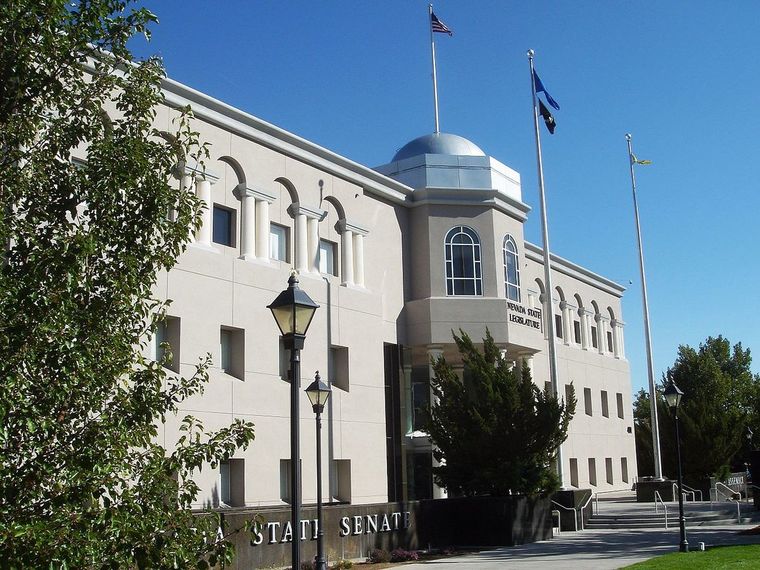In past posts we have covered and discussed Nevada’s state legislature, the body that sets policy and establishes the budget for our state of just over 3 million people. [1] The 80th Nevada Legislature adjourned just after midnight on June 4, [2] and it did so after adopting a $29.4 billion biennial budget. [3] The budget took effect July 1, and with the beginning of a new fiscal year comes a reset to one measure of Nevada auto accident law.
Annual tabulations of data are useful for several reasons. These measures can be used to:
- Create a one-time metric of a phenomenon placed in a familiar context
- Sustain a series of snapshots for comparisons and identifying trends
- Compare and contrast one data set with other data sets on a similar scale
- Extrapolate from or sub-divide the data to other measures (e.g., units per day)
- Ensure that resources allocated on an annual basis meet the relative need
Nevada’s fiscal year runs from July 1 to June 30 of the following year. [4] The federal government uses a different measure: October 1 to September 30. [5] Because much federal spending, grant allocations, and other resources are pegged to the federal calendar, the October-to-September calendar is a common one even for non-governmental agencies. Many private corporations use a July-to-June calendar. And the most familiar calendar for ordinary people is the calendar year, which runs from January 1 to December 31.
Nevada Car Crashes Annually
In 2017 some 22,500 car crashes in Nevada claimed more than 300 lives and left more than 34,000 people injured. [6] According to one recent report, these accidents caused a combined economic loss of $1.98 billion in the state, a cost on the order of $700 for every resident of the Silver State. This loss is attributable to numerous economic losses, including:
- Property damage (to damaged vehicles, buildings, possessions)
- Immediate medical care
- Future medical care (e.g., physical therapy, non-emergency surgery)
- Lost workplace productivity
- Forgone household services
The report ranked Nevada in the middle of the pack in its analysis of several features of overall roadway safety. One area of weakness for Nevada was its seat belt law, which is not a primary-enforcement law that allows a police officer to pull over a vehicle based on that violation alone. Seat belts are credited with saving 78 lives among Nevada drivers in 2017, but another 14 could have been spared if seat belts had been in use. The state’s relatively lax enforcement of this law could be to blame. [7]
The current rate of fatalities – again, just over 300 in Nevada in 2018 – is lower than the levels of a decade or more ago. The annual rate has been fluctuating in this range over the past several years, but it is actually higher than the 243 recorded in 2009. [8] It could be that the economic effects of the Great Recession – which led to double-digit unemployment in the state and left many drivers at home on the couch – cleared the roads and led to fewer fatal crashes.
The Clock Keeps Ticking
The previous fiscal year, which officially closed on June 30, continued to notch Nevada auto accidents until the end. A 28-year-old man driving a Dodge “muscle car” veered off the highway in the northbound lane of the 215 Beltway, resulting in his death at the scene. [10] Also on June 30 the driver of a vehicle was ejected and suffered fatal injuries after a rollover accident on US-50 in Dayton. [7] On June 25 two vehicles collided on US-95 about an hour north of Tonopah, resulting in at least one fatality. [11]
The first car crash of the new fiscal year occurred in the early hours of the period. A cyclist southeast of downtown Las Vegas – near the intersection of Fremont Street and Oakey Boulevard – suffered a critical injury at about 2 a.m. when he collided with a bus operated by the Regional Transportation Commission. The cause of the accident is still unknown. A few hours later, still before many people had woken to head to work on this first day of the new (fiscal) year, a cargo van loaded with illegal fireworks was involved in a fatal crash. Traffic on US-95 was stopped in both directions while the crash scene was secured and cleared, which took some five hours in total. Minutes later a motorcycle and another vehicle crashed near Charleston Boulevard and Oahu Street, resulting in the motorcyclist being hospitalized with non-life-threatening injuries. Some three hours after the fireworks-van crash site was cleaned up, another stretch of US-95 witnessed a fatal head-on collision. [12]
With all these numbers swirling around, it can be easy to overlook one important fact: the most important car accident in the world is the one that injures or kills you or a loved one. If your family has been affected by an automobile accident that claimed life or caused serious injuries, once the immediate medical and safety needs have been met you should act promptly to secure the guidance of an experienced car accident lawyer. This will help you understand what rights you have to pursue a claim for damages and how your claims may prevail.
[1] https://worldpopulationreview.com/states/nevada
[2] https://www.leg.state.nv.us/Session/80th2019
[3] http://www.openbudget.nv.gov/OpenGov/ViewBudgetSummary.aep
[4] http://www.openbudget.nv.gov/OpenGov/ViewBudgetSummary.aep
[5] https://en.wikipedia.org/wiki/Fiscal_year#Federal_government
[6]
[8] https://zerofatalitiesnv.com/
[10] https://twitter.com/NHPNorthernComm/status/1143719169361211392
[11] https://twitter.com/NHPNorthernComm/status/1145448919523983360
Image Credit: Dave Parker/Wikimedia Commons


